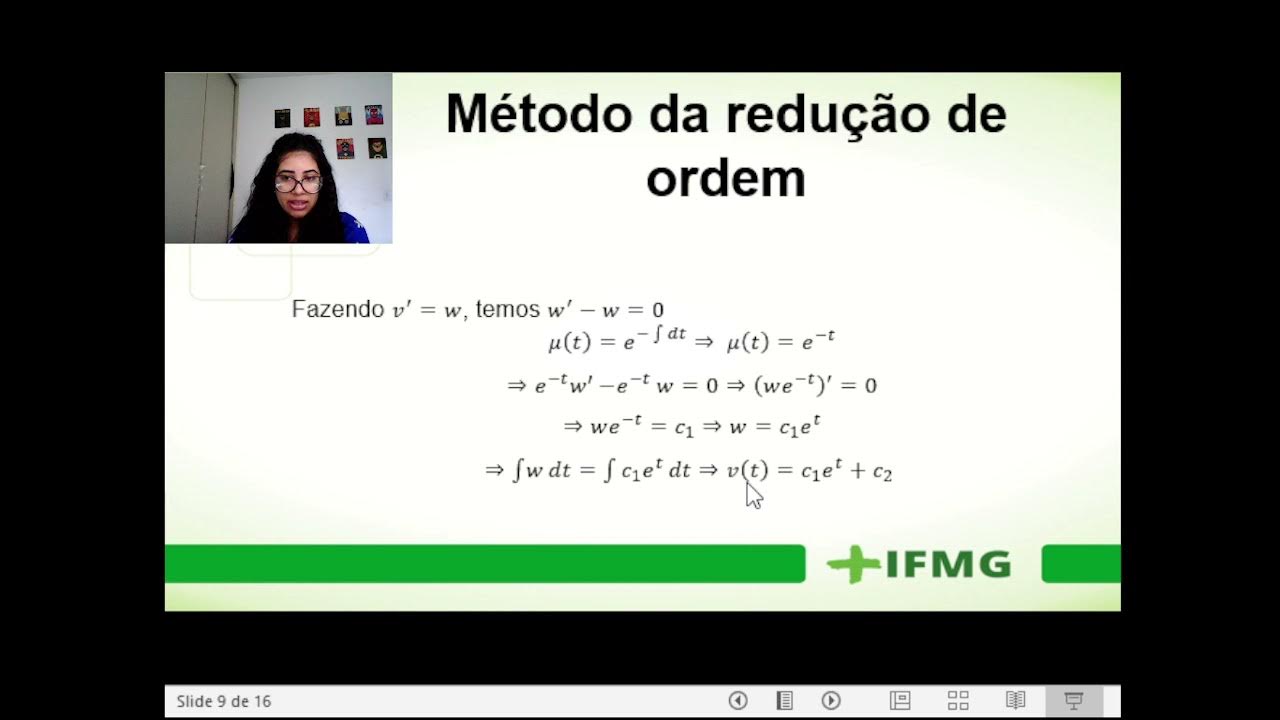General Solution to Non-Homogeneous DE
Summary
TLDRThis video introduces the concept of non-homogeneous differential equations, focusing on understanding their general solutions. It first reviews homogeneous differential equations, where the solution is a linear combination of independent solutions. The video then explores how non-homogeneous equations include a particular solution that satisfies the equation when the non-zero function Q(x) is present. The general solution to a non-homogeneous differential equation is the sum of this particular solution and the general solution to the homogeneous case. The presenter also works through an example to clarify these concepts.
Takeaways
- 📖 The general solution to non-homogeneous differential equations is a crucial foundation before learning specific techniques for solving them.
- 💡 Homogeneous differential equations have the form where a combination of derivatives equals zero and have linearly independent solutions.
- 🔗 Any linear combination of the solutions to a homogeneous differential equation is also a solution, forming the general solution denoted by Yᵧ.
- 🔍 In a non-homogeneous differential equation, the equation equals a function Q(x) instead of zero, which allows us to find a particular solution (Yₚ).
- ✅ The general solution for a non-homogeneous differential equation is a combination of the particular solution Yₚ and the general solution Yᵧ of the related homogeneous equation.
- 🧩 Using linear operators (L) on solutions, we can demonstrate that adding Yₚ and Yᵧ results in a valid solution for the non-homogeneous case.
- 📝 When checking for solutions, taking derivatives of the particular and homogeneous solutions can confirm if they satisfy the original equation.
- 🎯 In an example, a second-order non-homogeneous differential equation is solved with a particular solution Yₚ = x + 1, verified by substituting derivatives into the equation.
- 🧠 The example also solves the related homogeneous differential equation to find Yᵧ, using characteristic equations and exponential solutions.
- 🔄 Combining Yₚ and Yᵧ shows that only the particular solution affects the right-hand side of the non-homogeneous equation, confirming the general solution approach.
Q & A
What is a homogeneous differential equation?
-A homogeneous differential equation is one where all terms involving the unknown function and its derivatives sum to zero. It has the general form where the function and its derivatives, multiplied by various functions of x, equal zero.
How do you find the general solution to a homogeneous differential equation?
-The general solution to a homogeneous differential equation is a linear combination of n linearly independent solutions. These solutions are typically labeled y1(x), y2(x), ..., yn(x), and the general solution is expressed as c1y1 + c2y2 + ... + cnyn, where c1, c2, ..., cn are arbitrary constants.
What is the role of a particular solution in non-homogeneous differential equations?
-The particular solution of a non-homogeneous differential equation is a specific solution that satisfies the equation when the right-hand side is a non-zero function, Q(x). It provides a way to balance the non-homogeneous part of the equation.
What is the general solution to a non-homogeneous differential equation?
-The general solution to a non-homogeneous differential equation is the sum of the particular solution (Yp) and the general solution to the corresponding homogeneous equation (Yh). This is expressed as Y = Yp + Yh.
Why is the homogeneous solution included in the general solution of a non-homogeneous differential equation?
-The homogeneous solution is included because it doesn't alter the right-hand side of the non-homogeneous equation. Adding it to the particular solution still satisfies the overall equation and accounts for the general behavior of the system.
What does the operator L represent in the context of differential equations?
-In the context of the video, L is a linear operator representing the differential equation. For example, L acting on Y can represent the differential equation in a compact form without explicitly writing out all terms.
How does the linear operator L act on the solutions of the differential equation?
-When L acts on the homogeneous solution Yh, it results in zero (L(Yh) = 0). When L acts on the particular solution Yp, it results in the non-zero function Q(x) (L(Yp) = Q(x)).
What happens when you add the particular solution and homogeneous solution in a non-homogeneous differential equation?
-When you add the particular solution Yp and the homogeneous solution Yh, the result satisfies the non-homogeneous differential equation because L(Yp + Yh) = L(Yp) + L(Yh) = Q(x) + 0 = Q(x).
How do you verify that a particular solution satisfies a non-homogeneous differential equation?
-To verify, you substitute the particular solution into the differential equation and check if the left-hand side simplifies to match the right-hand side (Q(x)).
What is the characteristic equation, and how is it used to solve homogeneous differential equations?
-The characteristic equation is derived by assuming a solution of the form Y = e^(rx) for the homogeneous differential equation. Solving the characteristic equation gives the values of r, which are used to construct the general solution involving exponential terms.
Outlines

此内容仅限付费用户访问。 请升级后访问。
立即升级Mindmap

此内容仅限付费用户访问。 请升级后访问。
立即升级Keywords

此内容仅限付费用户访问。 请升级后访问。
立即升级Highlights

此内容仅限付费用户访问。 请升级后访问。
立即升级Transcripts

此内容仅限付费用户访问。 请升级后访问。
立即升级5.0 / 5 (0 votes)






